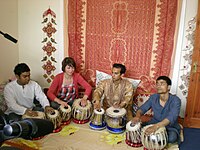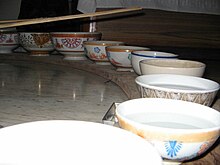This article includes a list of references, related reading, or external links, but its sources remain unclear because it lacks inline citations. Please help improve this article by introducing more precise citations. (February 2013) (Learn how and when to remove this message)

Musical instruments of the Indian subcontinent can be broadly classified according to the Hornbostel–Sachs system into four categories: chordophones (string instruments), aerophones (wind instruments), membranophones (drums) and idiophones (non-drum percussion instruments).










